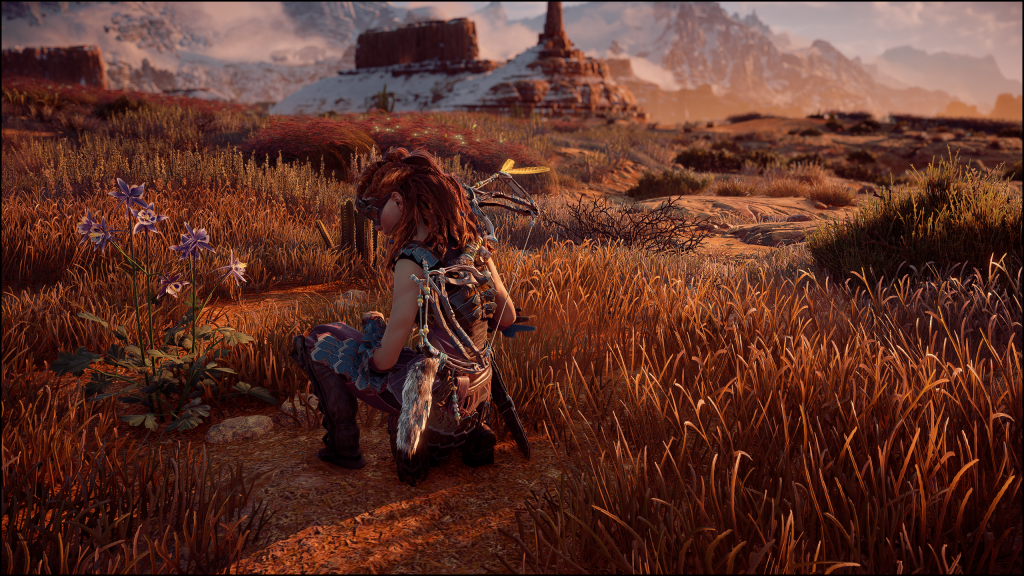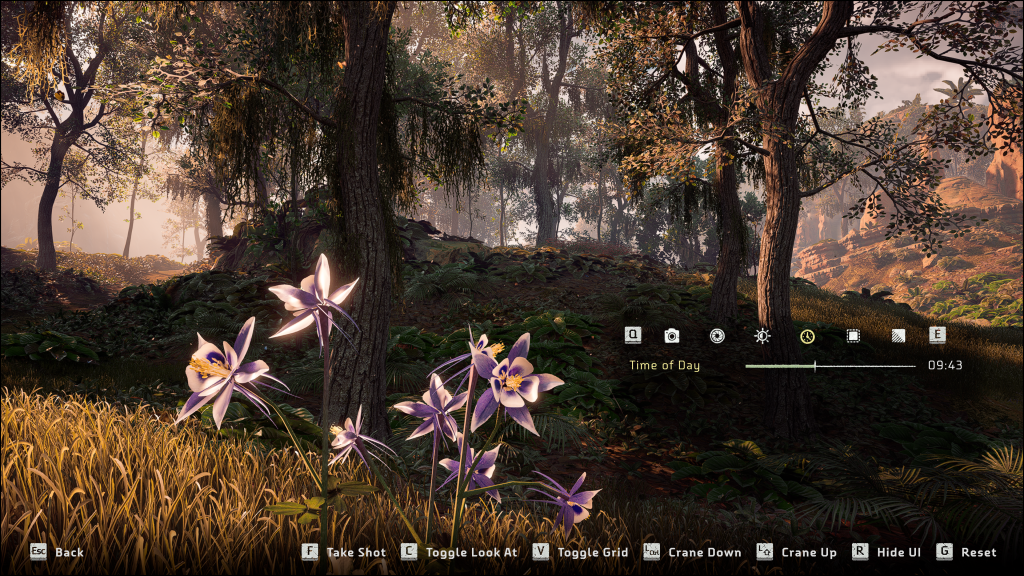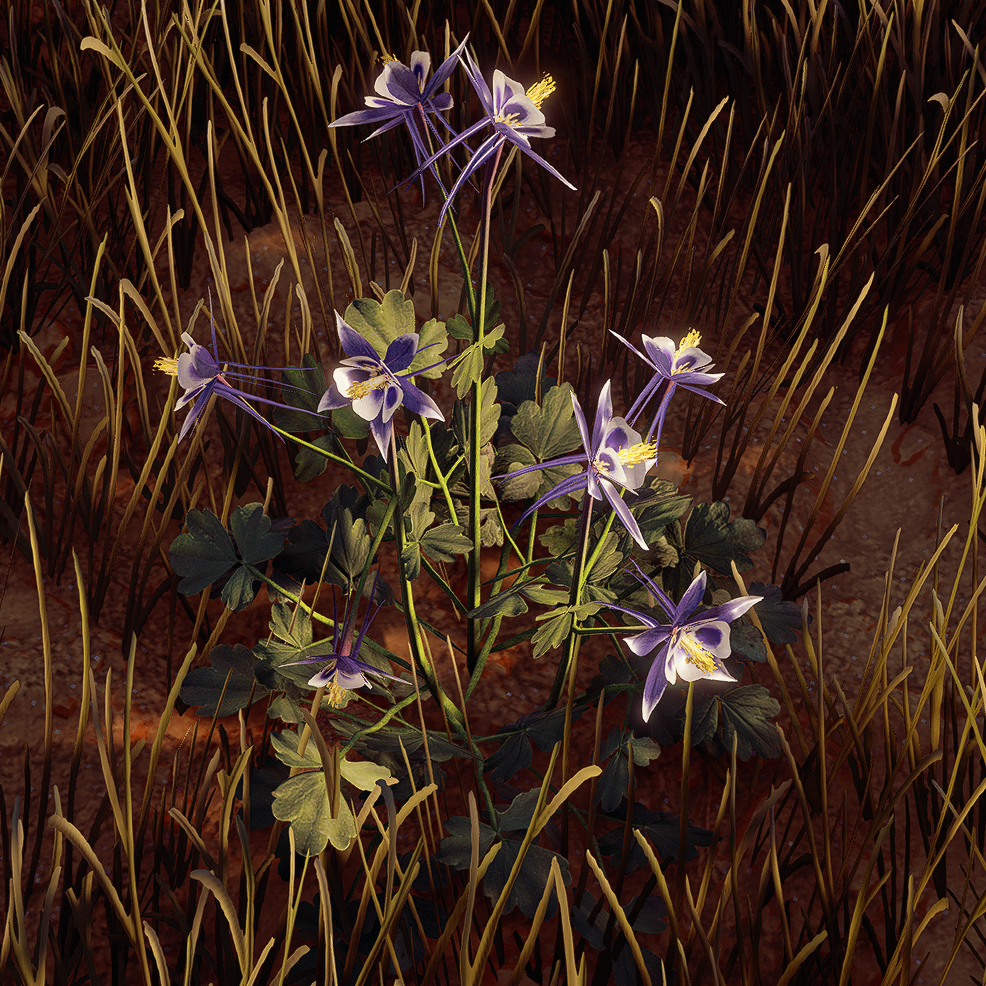As some of you may have seen from Immy’s blog, we have officially embarked on our next plant! Hurray! We were excited to start working on freeze rime root because
- It’s so pretty! I mean look at it. LOOK AT IT!!!
- It’s very easy to identify the inspiration, it’s the gorgeous Colorado blue columbine
- It’s a fun challenge to try and write from the point of view of a Carja archivist. I mean, they don’t seem like the people I’d like to hang out with very much, so that ought to make me think this through a little…
- It’s so pretty!!! What do you mean I’m repetitive? Have you seen how pretty it is? Have you?

And so, like the overly excitable puppy I can be, I just jumped in and… fell flat on my face. Because… ehm… a lot of things went wrong…
In this little part of the adventure, I want to talk you through how I put together the botanical description for the fictional plant. The tales of how I suck at capturing a plausible Carja voice is for next time…
It seems one of the important first steps in basing something in reality is to actually know how to spell the original damned thing… So, hi, I’m Maria, and I could have sworn the plant was Aquilegia caerulea instead of the actual Aquilegia coerulea. If you can’t spot where I went wrong, the first vowel in the epithet is a o, not an a. But, you may wonder, so what, why am I so bothered by it? Because, dear reader, I have no excuse: one of my first actions was to go to the international plant names index (IPNI to its mates) and check the correct accepted name.
So… I knew the right thing… and then I proceeded to note down the wrong thing, AND spell it out to Immy wrong. This is why I’m fabulous at the whole “consulting botanist” gig: I confuse myself without reason AND pass it on – like a shampoo and conditioner, all in one.

The thing I didn’t mess up was when I broke the news to Immy with whole “It’s in the buttercup family”. That was accurate. Maybe this whole plant family identification thing is not familiar to some but it can help us in a myriad of ways. In a way, knowing the plant family gives us context for the plant. We can understand aspects of its biology, ecology, and evolutionary past. And more often than not it’s practically very useful. Maybe you encounter a brand-new plant – if you can narrow down the family then you are much closer to finding out what it is than if you have the entire national flora to check through.
I am actually not a natural when it comes to plant ID, for the majority of cases I can’t do the whole “I’ve seen it once, I know it forever”. I need to work it out, and plant family diagnostics help me out with this, I can work things out slowly and by a process of elimination. I know Aquilegia looks nothing like a buttercup at first look, but look a little closer, look at the divided leaves, the showy flowers, the many stamens. Yes, it looks weird, and different (and adorable!) but it does actually look buttercup-py.

When it came to the actual diagnostics of the plant in game, it’s very very similar to the original one, but there are a few things I noticed. First off, we have the leaves – the original plant has leaves that are deeply divided which get smaller as you go up the stem ending with a bract-like leaf. The fictional kind of does it too, but there’s a question on the bract – I don’t really see it. In my first draft I wrote it in, because it felt natural to me that it should be there, but then Immy also objected that they couldn’t see it so that little bit had to go. But why, I hear you ask. What’s the biological reason for losing the bract? And to that, I answer: no clue. Absolutely no idea. Then we look at the flowers – most of it, very similar, but notice how the colours interplay in the petals. The actual plant has white petals and blue sepals, but this little joy has blue in the petals! Isn’t that adorable? The stamens are much more erect than in the real plant too, and a little longer than we would expect.
And then we have the spurs… In the original plant they make a little sac. This is useful for the nectar. But in our plant they get to a point. What gives? Now I have some ideas as to why, and this difference is where I will try to do some fun ecology connections, but I am not going to lie, I was perplexed when I first saw it.

Below is the botanical description I put together. Some things I imagined, others I just tried to describe. And for the things I had no idea (like the seeds for example) I simply went for parsimony and kept characteristics form the original plant.
Next time I will talk you through my failed Carja attempts and why I should never ever be allowed to make up phytochemisty.
Freeze Rime Root description:
Habit: Herbaceous, perennial, up to 80 cm tall
Stem: Erect, loosely branched and glabrous. Vivid green at base (#228B22), with pinkish undertones near flower.
Leaves: Alternate, ternately divided and erect. Basal leaves with long petioles, lobulate, and slightly toothed. Cauline leaves as basal but smaller. Leaflets obovate and petiolate. Venation palmate, primary venation slightly contrasting in pale white, secondary venation more subtle and a similar hue of green as leaf.
Flowers: Terminal, hermaphrodite, actinomorphic, and campanulate. Floral parts in 5s. Sepals elliptic, purplish blue (#644b82) with white edging. Petals truncate, spurred, puberulent, white with centres and spurs purplish blue. Spurs linear, with small oil secreting glands running down the spur, terminating in a narrow tip. Stamens many, erect, often 1.5 times taller than the petals, and usually in multiples of five. Ovaries surrounded by flattened staminodia.
Fruit: Follicular and subtly connate.